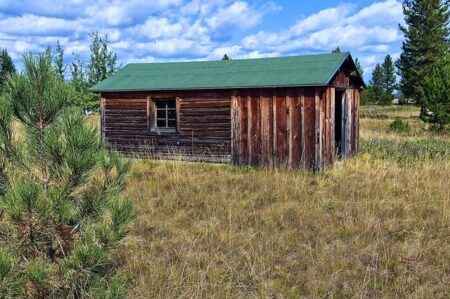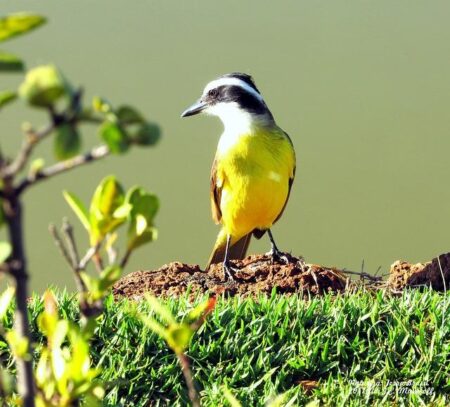Australia’s notorious magpie swooping season is back with renewed intensity, posing a significant hazard to cyclists across the country. Each spring, these territorial birds aggressively defend their nesting areas, but this year’s surge in attacks has seen riders bearing the brunt of their wrath. As thousands hit the roads and trails, reports of swooping incidents are rising sharply, prompting safety warnings and renewed calls for awareness among outdoor enthusiasts.
Australia’s Magpie Swooping Season Returns with Increased Aggression
This year, residents and commuters across Australia are bracing themselves for one of the most intense magpie swooping periods in recent memory. Reports indicate a marked increase in aggression levels among these territorial birds, particularly targeting cyclists who frequently traverse suburban streets during the breeding season. Experts suggest that changes in urban environments and weather patterns may be contributing factors, encouraging magpies to defend their nests more vigorously. Local councils are ramping up awareness campaigns, advising pedestrians and cyclists to stay vigilant, wear protective gear, and avoid known nesting hotspots where swooping incidents have surged.
The impact on daily commuters is significant, as many cyclists have altered their routes or invested in specially designed helmets with spikes to deter attacks. Schools and workplaces near magpie territories have issued warnings to reduce outdoor activities during peak swooping hours, typically early mornings and late afternoons. The phenomenon has even prompted community discussions on balancing wildlife conservation with public safety. Below is a summary of precautionary measures recommended by wildlife authorities:
- Wear hats or helmets adorned with spikes to discourage swoops
- Avoid eye contact, as magpies perceive direct staring as a threat
- Alter travel routes to steer clear of frequent swooping zones
- Travel in groups, since magpies are less likely to attack multiple people
- Report aggressive birds to local council for monitoring and intervention
| Time of Day | Risk Level | Recommended Action |
|---|---|---|
| 6:00 AM – 9:00 AM | High | Wear protection; avoid lone travel |
| 12:00 PM – 2:00 PM | Moderate | Stay alert; stick to open areas |
| 4:00 PM – 7:00 PM | High | Use helmets with spikes; travel in groups |
| Other times | Low | Minimal precautions needed |
Why Cyclists Are the Primary Targets in This Year’s Attacks
Cyclists have become unwitting targets for magpies during this season due to their speed and frequent presence in areas where magpies breed. The birds tend to perceive the fast-moving bikes as threats to their nests, prompting aggressive swooping to protect their young. The combination of cyclists passing through narrow bike paths lined with dense trees and the high-pitched calls of magpies creates a perfect storm for surprise attacks. This year, experts report an uptick in incidents compared to previous seasons, highlighting a particular focus on solo riders and those wearing helmets, which may resemble natural predators from the birds’ perspective.
Several factors contribute to this heightened aggression:
- Increased cycling activity in suburban parks during the warmer months intensifies encounters.
- Proximity to magpie nesting sites along popular commuter routes.
- Helmet colors and shapes that confuse the birds, triggering defensive behavior.
| Factor | Impact Level |
|---|---|
| Speed of Cyclist | High |
| Nesting Density | Medium |
| Helmet Design | High |
| Rider Visibility | Medium |
Expert Advice on How to Stay Safe During Magpie Swooping Season
Understanding magpie behavior is key to minimizing the risk during swooping season. These birds typically target cyclists and pedestrians who unknowingly enter their nesting territory. Experts recommend wearing wide-brimmed hats or helmets equipped with eyespots or attached cable ties that can deter swoops by confusing or intimidating the birds. Additionally, maintaining a steady pace without sudden movements can reduce chances of provocation. Cyclists should consider taking alternative routes where possible, especially around known breeding sites identified by local councils.
Preparedness also involves staying alert and informed. Local wildlife organizations often provide updates on high-risk zones, allowing commuters to plan accordingly. Below is a quick reference guide summarizing essential tips to stay safe during magpie swooping season:
| Safety Tip | Reason |
|---|---|
| Wear a helmet with eyespots or cable ties | Distracts and deters swooping birds |
| Use alternative routes if possible | Avoid known nesting areas |
| Maintain steady, predictable movements | Reduces bird aggression triggered by sudden actions |
| Stay informed with local alerts | Updates on active swooping zones |
| Travel in groups when possible | Less likely to be targeted |
Final Thoughts
As Australia’s magpie swooping season returns with renewed intensity, cyclists remain the primary targets of these territorial birds. With warnings issued across affected regions, authorities and communities continue to urge vigilance and precaution to mitigate risks. As the season unfolds, awareness and preparedness will be key in ensuring both public safety and the protection of these iconic yet fiercely defensive native birds.




